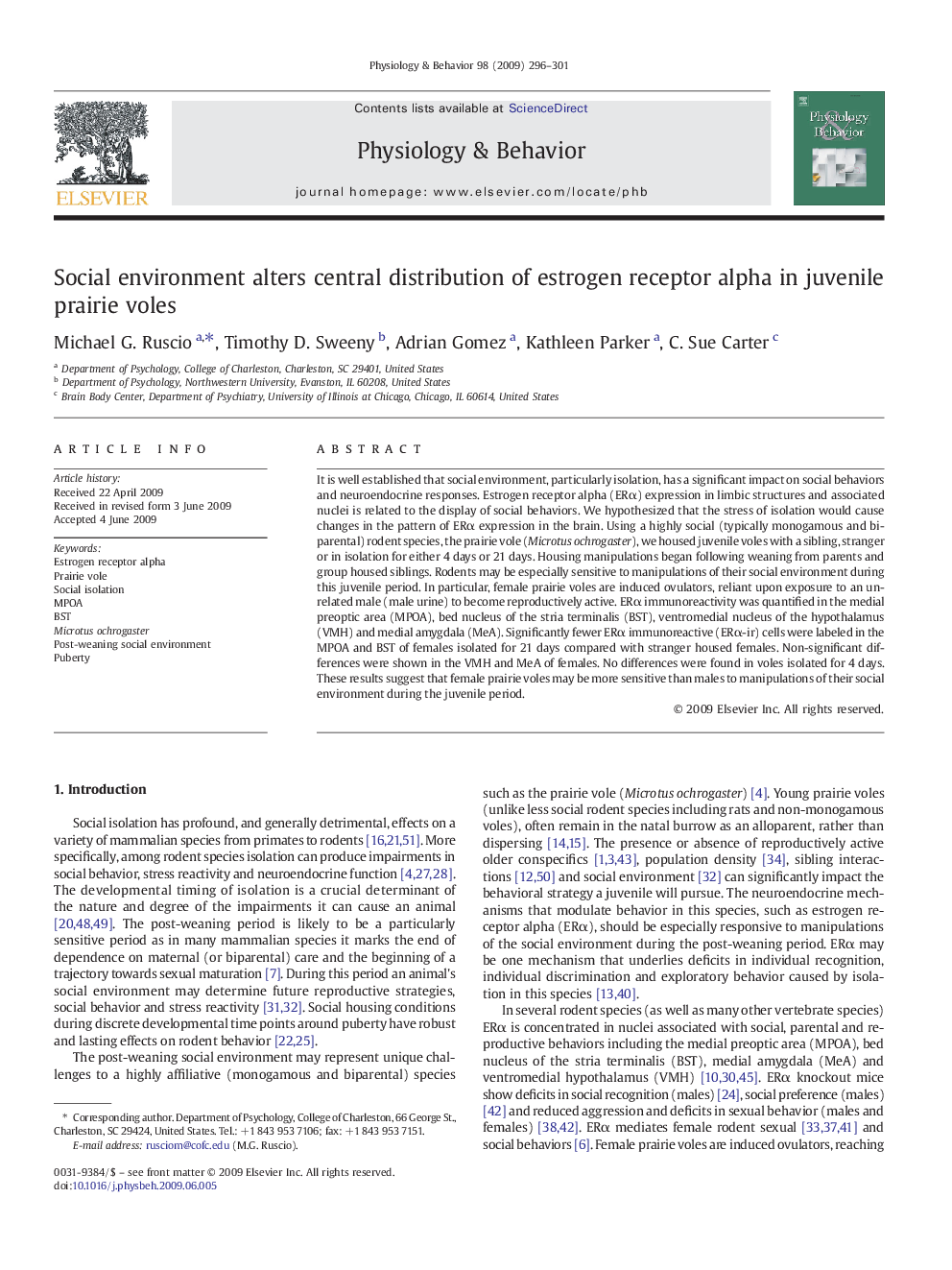| کد مقاله | کد نشریه | سال انتشار | مقاله انگلیسی | نسخه تمام متن |
|---|---|---|---|---|
| 2845010 | 1166374 | 2009 | 6 صفحه PDF | دانلود رایگان |
عنوان انگلیسی مقاله ISI
Social environment alters central distribution of estrogen receptor alpha in juvenile prairie voles
دانلود مقاله + سفارش ترجمه
دانلود مقاله ISI انگلیسی
رایگان برای ایرانیان
کلمات کلیدی
موضوعات مرتبط
علوم زیستی و بیوفناوری
بیوشیمی، ژنتیک و زیست شناسی مولکولی
فیزیولوژی
پیش نمایش صفحه اول مقاله

چکیده انگلیسی
It is well established that social environment, particularly isolation, has a significant impact on social behaviors and neuroendocrine responses. Estrogen receptor alpha (ERα) expression in limbic structures and associated nuclei is related to the display of social behaviors. We hypothesized that the stress of isolation would cause changes in the pattern of ERα expression in the brain. Using a highly social (typically monogamous and biparental) rodent species, the prairie vole (Microtus ochrogaster), we housed juvenile voles with a sibling, stranger or in isolation for either 4 days or 21 days. Housing manipulations began following weaning from parents and group housed siblings. Rodents may be especially sensitive to manipulations of their social environment during this juvenile period. In particular, female prairie voles are induced ovulators, reliant upon exposure to an unrelated male (male urine) to become reproductively active. ERα immunoreactivity was quantified in the medial preoptic area (MPOA), bed nucleus of the stria terminalis (BST), ventromedial nucleus of the hypothalamus (VMH) and medial amygdala (MeA). Significantly fewer ERα immunoreactive (ERα-ir) cells were labeled in the MPOA and BST of females isolated for 21 days compared with stranger housed females. Non-significant differences were shown in the VMH and MeA of females. No differences were found in voles isolated for 4 days. These results suggest that female prairie voles may be more sensitive than males to manipulations of their social environment during the juvenile period.
ناشر
Database: Elsevier - ScienceDirect (ساینس دایرکت)
Journal: Physiology & Behavior - Volume 98, Issue 3, 7 September 2009, Pages 296-301
Journal: Physiology & Behavior - Volume 98, Issue 3, 7 September 2009, Pages 296-301
نویسندگان
Michael G. Ruscio, Timothy D. Sweeny, Adrian Gomez, Kathleen Parker, C. Sue Carter,